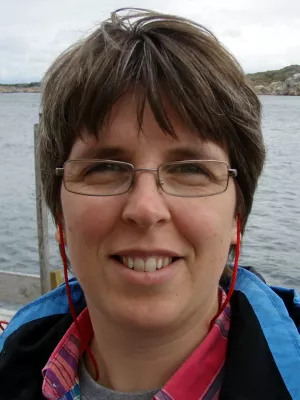
Helena Alexanderson
Professor

Active faulting and seismic hazard in the Outer Western Carpathians (Polish Galicia) : Evidence from fractured Quaternary gravels
Author
Summary, in English
This report opens a new window on Quaternary tectonics of the Outer Western Carpathians. We discuss results of fractured clasts analysis in Quaternary fluvial gravels within a 4.500 km2 large area comprising a part of the Outer Carpathians including Nowy Sącz Intramontane Basin (NSIB) as well as in the innermost part of the Carpathian Foredeep. Quaternary gravels bearing fractured clasts are widespread within the area, we observed them in 180 exposures. In the Carpathian Foredeep and in the Outer Carpathians excluding the NSIB, the exposures of gravels bearing fractured clasts are located largely close to (<2 km) all major overthrusts and close to (<0.75 km) the cross-fold faults of the Skawa River Fault System (SRFS). The clast-cutting fractures are mostly joints attesting to widespread Quaternary tectonic activity of the faults. Moreover, the density of occurrence of gravels bearing fractured clasts is considerably higher within the NSIB than in other parts of the study area. Furthermore, our results shed new light on the seismic hazard in the study area. In our interpretation, the clast-cutting fractures are damage resulting from coseismic rupturing of underlying bedrock faults or from regional seismic shaking. We conclude that in the study area the seismic hazard posed by natural seismicity can matter only in case of planning there the erection of critical structures like nuclear power plants, nuclear waste repositories or gas storage facilities. On the other hand, we infer that the appreciable seismic hazard is near the cross-fold faults of the SRFS, due to the location of Świnna Poręba Artificial Lake there, which can lead to triggering significant seismicity in the area. Furthermore, we suggest that fractured clasts can serve worldwide as providers of information on paleoseismicity and can be useful for mapping blind faults.
Department/s
- Quaternary Sciences
Publishing year
2020
Language
English
Publication/Series
Journal of Structural Geology
Volume
141
Document type
Journal article
Publisher
Elsevier
Topic
- Geophysics
Keywords
- Active faulting
- Blind faults
- Fractured clasts
- Outer Western Carpathians
- Seismic hazard
Status
Published
ISBN/ISSN/Other
- ISSN: 0191-8141

